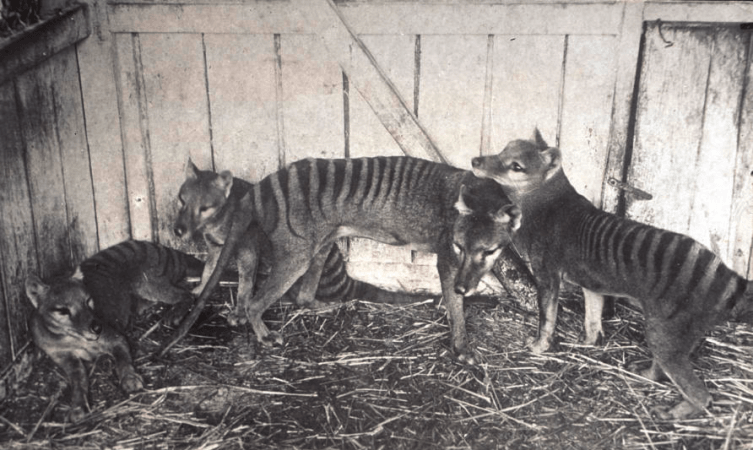
In what is claimed to be one of the most complete genetic blueprints for an extinct species, scientists have performed DNA sequencing for the Tasmanian tiger, unlocking secrets about this unique marsupial that was hunted to extinction in 1936.
Many aspects of the evolutionary history of this apex predator, also known as thylacine, have remained unknown ever since the last known of its kind died in captivity decades ago. But, the new study, based on a 106-year-old genome of a pup preserved in a jar, revealed that the Tasmanian tiger had poor genetic health even before humans began hunting the animal.
A research, published in the journal Nature Ecology and Evolution, has revealed that the creature started facing a decline in its genetic diversity more than 70,000 years ago, which suggests that it was less resilient to environmental change even before Aboriginal Australians are believed to have populated the continent some 65,000 years ago.
"Our hope is that there is a lot the thylacine can tell us about the genetic basis of extinction to help other species," Andrew Pask, a biologist at the University of Melbourne and the study's co-author, said in a statement, adding that the research would one day help scientists clone the Tasmanian tiger and bring it back from extinction.
"As this genome is one of the most complete for an extinct species, it is technically the first step to 'bringing the thylacine back', but we are still a long way off that possibility," Pask said.

Although the Tasmanian tiger evolved to look so similar to the dog-like dingo, scientists found that the genetics of the animal was more closely related to fellow Australian marsupial called the Tasmanian devil.
However, the Tasmanian tiger looked more like a dingo because their skull and body shape developed similarly due to their hunting technique and diet of fresh meat. According to scientists, this process is called "convergent evolution" where organisms that are not closely related independently evolve to look the same as they adapt to the same environment.
Researchers now believe that the need to hunt led the Tasmanian tiger to transform its appearance to look similar to the wolf over the past 160 million years. Meanwhile, the successful DNA sequencing is also expected to help scientists better understand the genetics that drove this process and uncover secrets about the animal's biology.

















